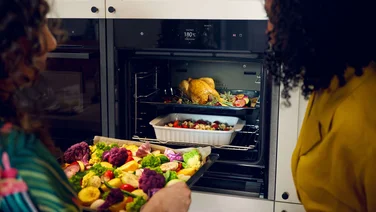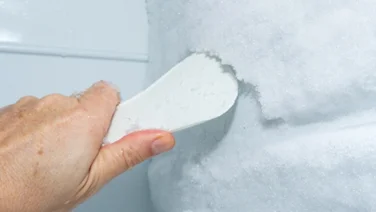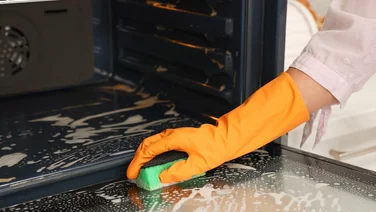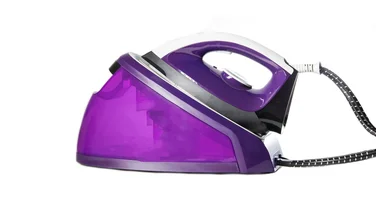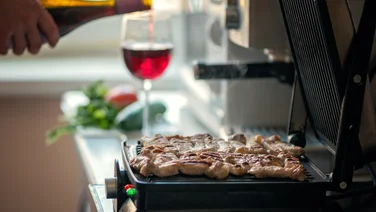To help us provide you with free impartial advice, we may earn a commission if you buy through links on our site. Learn more

Washing machines are a useful, if not downright essential, part of everyday life and, for a lot of people, it’s hard to remember a time without them. The best washing machines will clean your clothes quickly and efficiently, with a much-needed spin cycle at the end to remove most of the excess water so that your clothes will dry faster. But if your washing machine is not spinning, what should be a quick and easy job is going to become laborious.
If something is stopping your washing machine from spinning, you will be left with a soggy bundle of dripping laundry that will need wringing out manually. Or worse, you might find that the clothes haven’t even been washed properly since some spinning during the cycle is what helps to remove dirt and detergent.
Sometimes it will be possible to manually start up a spin cycle, but when you can’t, knowing why your washing machine isn’t spinning could be invaluable. Many issues can be solved quickly and easily, without the need for a technician, but it’s also important to know when to admit defeat and call in a professional.
READ NEXT: Best washing machines
Why is my washing machine not spinning?
There are many potential reasons for your washing machine to stop spinning. Vivien Fodor, Laundry Category Manager at Hotpoint, sums up some of the most common issues: “When it comes to a washing machine not spinning, there are several factors that could be making this happen. Unbalanced loads and overloading are often the main causes but, sometimes, damage to the lid switch or door lock, as well as draining problems, can also be to blame.”What’s Vivien’s advice for avoiding these? “Ensure your clothes are evenly distributed and don’t overload the machine. It’s also important to regularly check the lid, door and draining components for any clogs or damage. We always recommend registering your appliance as soon as you receive it, this way you can maximise your guarantee and prevent any mishaps.”
Read on as we expand on Vivien’s advice.
Six reasons your washing machine might not be spinning
While this list is by no means completely comprehensive, these are the most likely causes if your washing machine refuses to spin:
- The washing machine is uneven and unstable
- Overloading
- Unbalanced load
- The water won’t drain
- Excess detergent
- The drive belt is damaged
So what can be done to solve these problems?
1. The washing machine is uneven and unstable
The problem: Did you know that washing machines have feet? If these feet aren’t level, your washing machine won’t be evenly balanced and will move around as the weight in the drum rotates. This is not only incredibly noisy when your machine is spinning, but it may also prevent it from doing so entirely. As it struggles to find purchase, sensors in the machine may prevent the spin cycle from starting so as not to cause any damage to the appliance.
It’s incredibly easy to ascertain if your washing machine isn’t stable by simply leaning on it and seeing if it tips or moves as you shift your weight. Alternatively, you could invest in one of the best laser levels to show you exactly whether the machine is uneven – this is probably the easiest way to get the most precise results.

The solution: Levelling out an uneven washing machine is pretty simple – you just need to adjust the feet so that they are all at the right height. First things first, make sure you disconnect the appliance and then pull it away from the wall so that it’s easy to access all four feet. You’ll also want to examine the floor underneath for any damage – broken tiles or loose floorboards, for instance – that might be responsible for destabilising your machine.
Check your appliance’s manual for exact instructions, but most machines have lock nuts on each foot that can be loosened with a wrench, allowing the bolts to be raised or lowered to balance the machine. Check the balance as you go with a laser or spirit level, and don’t forget to lock the nuts when you’re done.
2. Overloading
The problem: “Putting too many clothes in the washing machine can overload the motor and prevent it from spinning,” explains Sophie Lane, Product Training Manager for Miele. We’ve all been guilty of trying to cram too much into our washing machines at some point, but by doing so we prevent the clothes from agitating properly and the detergent from being applied evenly.
An overloaded machine is also likely to fail to spin. The weight of wet clothes puts too much strain on a washing machine, often leaving it unbalanced, and the sensors will prevent it from spinning.

The solution: This is an easy one – just don’t overload your machine.
“Check the operating instructions of the washing machine for the maximum load capacity for each cycle,” says Sophie. “Generally speaking, there needs to be enough room in the drum to fit your hand between the clothes and the top of the drum.”
3. Unbalanced load
The problem: “If the laundry inside the machine is not distributed evenly, it can cause the machine to become unbalanced and prevent spinning,” explains Sophie. “The most common cause is bath mats, as often people will try to wash bath mats on their own, but the rubber side sticks to the drum and causes an imbalance. It’s best to wash a few other things with it.”
Other common causes for this problem are singular large and absorbent items, such as duvets or pillows. As these things soak, they become heavier and create more of a gap in the drum. When the machine tries to spin, that heavy weight unbalances it and, again, this could cause the sensors to stop the machine from spinning.
The solution: Even out the weight distribution by washing more than one item at once – whether that’s padding out the drum with towels or washing two pillows at once – as this will allow the drum to spin safely. On a separate note, make sure your bedding and pillows are suitable for machine washing – our guide on how to wash pillows will give you all the advice you need.
4. The water won’t drain
The problem: Since the spin cycle is responsible for removing water from your clothes, before a washing machine can begin to spin it needs to be able to drain away any water that’s leftover from the wash.
“A clogged pump or drain can prevent the water from being pumped out of the machine, causing it to stop spinning,” explains Sophie.

The solution: “Check for any obstructions in the pump or drain hose and clear them, if necessary,” explains Sophie. Our guide on how to drain your washing machine will give you full instructions but, in brief, you should start by checking that the drain hose at the back of the washing machine isn’t bent, clogged or damaged. So, disconnect this and drain it. You’ll then also need to check the drain pump: manually empty any residual water, and inspect the pump, filter and impeller for any blockages.
Don’t forget to replace – or repair, if required – everything before reconnecting.
5. Excess detergent
The problem: Adding too much detergent to your wash won’t make your clothes cleaner. In fact, too much detergent makes it harder for the rinse cycle to remove it, leaving residual soap in your clothes. It also makes it harder for clothes to agitate, with the suds preventing clothes from rubbing together to be scrubbed clean. These excess suds can also confuse the washing machine’s sensors, making it think it’s fuller than it is, leading to a slower spin cycle or resulting in error messages that stop the spin cycle completely.
The solution: Only use a suitable detergent and always follow the specific dosage instructions according to how soiled the clothes are, and whether you live in a soft or hard water area. It’s also worth making sure that your washing machine drawers are clean so that there’s no build-up of detergent and softener.
6. The drive belt is damaged
The problem: If you’re not sure what the drive belt is, it’s simply what makes the drum in most washing machines rotate. So, if your washing machine has stopped spinning and you’ve dismissed the other problems on this list, the drive belt might be the issue. You can check the drive belt by spinning the drum manually: if there’s no resistance at all, it’s quite likely that the belt has broken or has been displaced.

The solution: Unfortunately, this is an occasion where you will need to call in a professional, particularly since a washing machine may need to be tipped over to access the drive belt, which could be very dangerous. This is a repair that’s best left to a specialist.

